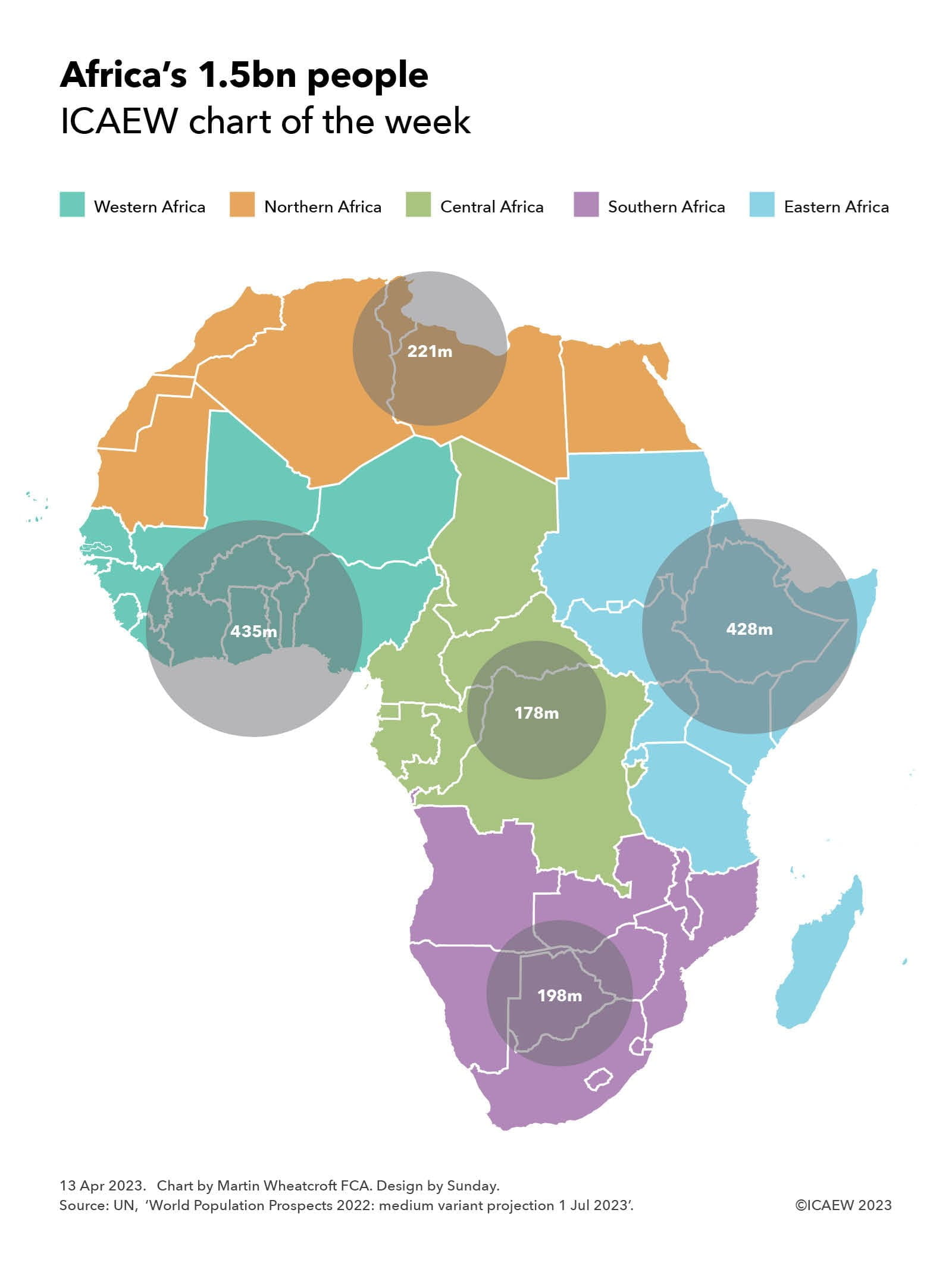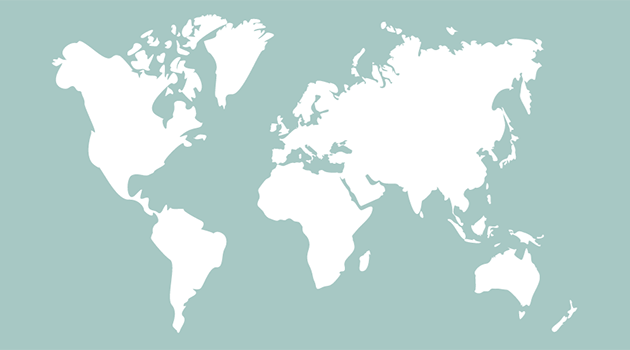
Our chart this week illustrates how Africa’s population of 1,460m can be divided into five regions. These comprise Western Africa with 435m people, Northern Africa with 221m, Central Africa with 178m, Southern Africa with 198m, and Eastern Africa with 428m.
These regions are based on the African Union’s official regions for its 55 member states, which differ from the regions used by the United Nations. They include Réunion (1.0m) and Mayotte (0.3m), two French overseas territories in the Indian Ocean that are not members of the African Union, as well as St Helena (5,000), an overseas territory of the UK in the Atlantic. It also includes an estimated 5.8m people living in African Union applicant Somaliland that are included within the number for Somalia.
Excluded are 175,000 or so people living on the African continent in Ceuta and Melilla (Spain), around 2.2m and 250,000 respectively in the Atlantic Ocean on the Canary Islands (Spain) and Madeira (Portugal), and several hundred people in the Indian Ocean within France’s Southern Territories.
The table below breaks down the total by country within each region, highlighting how the four largest countries by population each have more than 100m people, led by Nigeria with 223.8m (15.3% of Africa’s total), Ethiopia with 126.5m (8.7%), Egypt with 112.7m (7.7%) and the Democratic Republic of the Congo with 102.3m (7.0%).
The next largest are Tanzania with 67.4m (4.6%), South Africa with 60.4m (4.1%), Kenya with 55.1m (3.8%), Uganda with 48.6m (3.3%), Sudan with 48.1m (3.3%), Algeria with 45.6m (3.1%), Morocco with 37.8m (2.6%), Angola with 36.7m (2.5%), Ghana with 34.1m (2.3%), Mozambique with 33.9m (2.3%), Madagascar with 30.3m (2.1%) and Côte d’Ivoire with 28.9m (2.0%).
| Western Africa 435m | Northern Africa 221m | Central Africa 178m | Southern Africa 198m | Eastern Africa 428m |
| Nigeria 223.8m | Egypt 112.7m | DR Congo 102.3m | South Africa 60.4m | Ethiopia 126.5m |
| Ghana 34.1m | Algeria 45.6m | Cameroon 28.6m | Angola 36.7m | Tanzania 67.4m |
| Côte d’Ivoire 28.9m | Morocco 37.8m | Chad 18.3m | Mozambique 33.9m | Kenya 55.1m |
| Niger 27.2m | Tunisia 12.5m | Burundi 13.2m | Malawi 20.9m | Uganda 48.6m |
| Mali 23.3m | Libya 6.9m | Congo 6.1m | Zambia 20.6m | Sudan 48.1m |
| Burkina Faso 23.3m | Mauritania 4.9m | C African Rep 5.7m | Zimbabwe 16.7m | Madagascar 30.3m |
| Senegal 17.7m | W Sahara 0.6m | Gabon 2.4m | Botswana 2.7m | Somalia 18.1m |
| Guinea 14.2m | Eq Guinea 1.7m | Namibia 2.6m | Rwanda 14.1m | |
| Benin 13.7m | São Tomé 0.2m | Lesotho 2.3m | South Sudan 11.1m | |
| Togo 9.1m | Eswatini 1.2m | Eritrea 3.7m | ||
| Sierra Leone 8.9m | Mauritius 1.3m | |||
| Liberia 5.4m | Djibouti 1.1m | |||
| Gambia 2.8m | Réunion (FR) 1.0m | |||
| Guinea-Bissau 2.2m | Comoros 0.9m | |||
| Cabo Verde 0.6m | Mayotte (FR) 0.3m | |||
| St Helena (UK) 0.0m | Seychelles 0.1m |
The population of Africa is expected to grow significantly over the rest of the century, with the UN’s medium variant projecting a population of 1.7bn (20% of the projected global total) in 2030, 2.1bn in 2040 (23%), 2.5bn (26%) in 2050, 2.9bn (28%) in 2060, 3.2bn (31%) in 2070, 3.5bn (34%) in 2080, 3.7bn (36%) in 2090 and 3.9bn (38%) in 2100. This is despite a rapidly declining birth rate, with many more Africans living much longer lives than preceding generations.
Africa is currently relatively poor compared with advanced economies, with the total GDP for its 55 countries and 1.5bn people close in size to the UK’s single country GDP for 67.5m people of around £2.5trn a year at current exchange rates. This is around 3% of the global economy in each case.
The UK’s share of the global economy is likely to decline over the rest of the century as Africa and other developing economies grow at a much faster pace. For Africa the combination of a rapidly growing population and economic development should see it become substantially more significant to the global economy than it is today.


